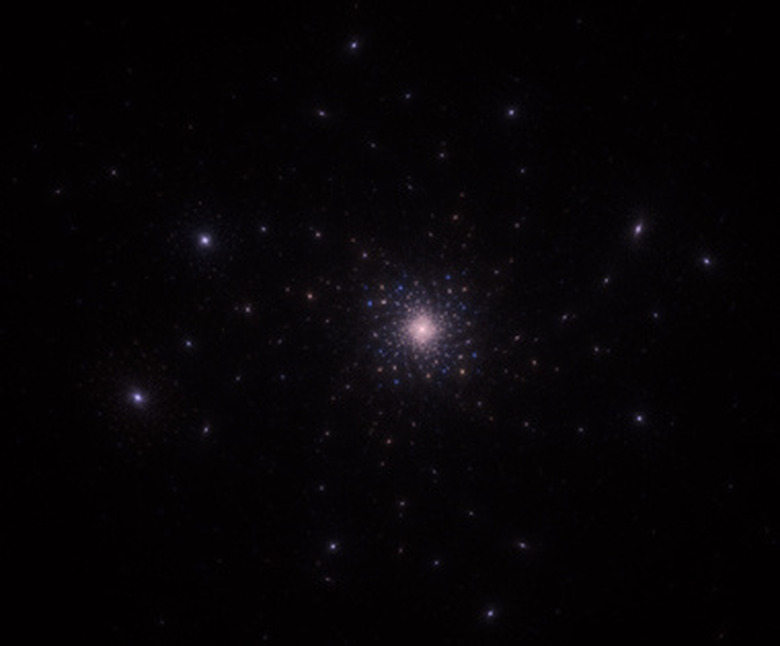What Is The Surface Terrain Like On Neptune?
Neptune is the eighth planet from the Sun in our solar system and is one of only two invisible to the naked eye. The planet is almost four times the size of Earth, and because of its composition, is almost 17 times heavier. It takes Neptune 165 Earth years to orbit the Sun and a day on the planet lasts around 16 hours.
Gas Giant
Gas Giant
Neptune is classified as one of our solar system's "gas giant" planets, meaning it does not have a solid surface and is largely a collection of swirling clouds and gas. The blue "surface" we see in pictures of Neptune is in fact the top of a permanent cloud cover. Below Neptune's clouds lies an atmosphere of hydrogen, helium and methane, which sits above an icy "mantle" layer.
The Mantle
The Mantle
Neptune's mantle is an layer of water, ammonia, silica and methane ices and may be the closest thing Neptune has to a surface. There are differing theories as to whether water is abundant enough there to produce an ocean or whether the mantle is just a deep layer of compressed gas extending to Neptune's core.
A Cold Place
A Cold Place
If you were able to visit Neptune and descend through the clouds to the core, you would likely experience a great change in temperature. The mantle of Neptune is estimated to be around -223 degrees Celsius, but descending further in to the planet's core the temperature is thought to increase. This is because, like Earth, the core is thought to still contain heat from the planet's formation. As a result, Neptune gives off almost three times as much heat as it receives from the Sun.
A Windy Place
A Windy Place
If the cold were not severe enough, NASA estimates powerful winds to be present at the mantle level, some moving as fast as 700 miles an hour. These winds are responsible for the violent swirling of Neptune's clouds which satellites have observed from space. These winds, stronger than even the most violent windstorm on Earth, are caused by the extreme difference in temperature between Neptune's upper atmosphere and its core.
Neptune's Discovery
Neptune's Discovery
Neptune was the first planet to be "discovered" by means of mathematics. Astronomers noticed irregularity in the orbit of Uranus, suggesting a planet beyond could be influencing it. Without actually being able to see Neptune, in 1843, British astronomer John C. Adams predicted the planet to be at least 1 billion miles beyond Uranus and sent his work to the Astronomer Royal of England, John B. Airy, but the work was ignored as Airy did not trust Adams as a source.
Meanwhile in France, Urbain J. J. Leverrier, an astronomer unknown to Adams, was working on a similar project. He sent his findings, which were similar to those of Adams, to Johann G. Galle in Berlin, Germany, who had recently charted the stars near where Neptune was thought to be. On September 26, 1846, Galle and his assistant Heinrich L. d'Arrest sighted Neptune for the first time. Today John C. Adams and Urbain J. J. Leverrier are credited with discovering Neptune, the planet named for the Roman god of the sea.
Cite This Article
MLA
Stefansson, Jon. "What Is The Surface Terrain Like On Neptune?" sciencing.com, https://www.sciencing.com/surface-terrain-like-neptune-7221643/. 24 April 2017.
APA
Stefansson, Jon. (2017, April 24). What Is The Surface Terrain Like On Neptune?. sciencing.com. Retrieved from https://www.sciencing.com/surface-terrain-like-neptune-7221643/
Chicago
Stefansson, Jon. What Is The Surface Terrain Like On Neptune? last modified March 24, 2022. https://www.sciencing.com/surface-terrain-like-neptune-7221643/
